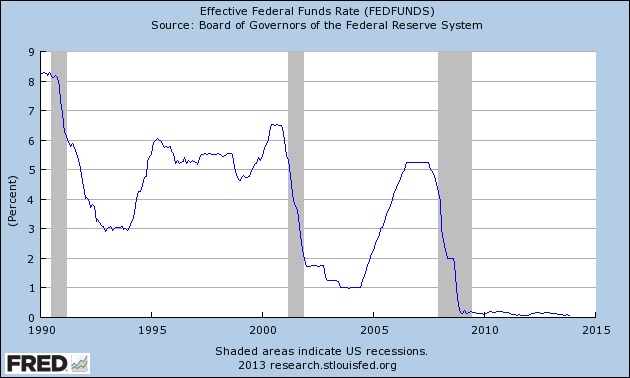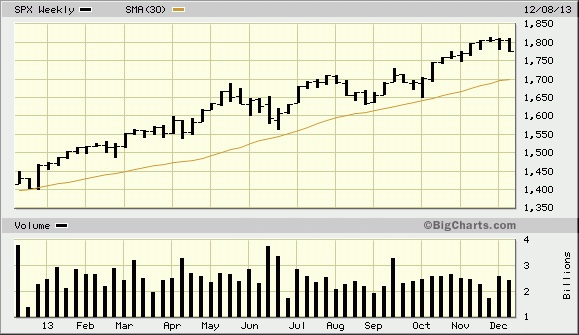Is It 1929 All Over Again?
A growing number of market technicians, some of them highly respected, are forecasting a sharp correction in the January-February time frame. In light of a number of recent inquiries I’ve had regarding this possibility, let’s examine this topic.
Tom DeMark is one of Wall Street’s most esteemed technical analysts. He recently uncovered an analog between the current stock market and the run-up to the 1929 top. Tom McClellan published a chart comparing the two markets in a recent article. The theory behind price pattern analogs is that “similar market conditions can produce similar patterns” as McClellan put it.
One problem with comparing stock market patterns from different periods is that the underlying conditions behind the patterns are often dissimilar. For instance, the run-up to the 1929 high was fueled by widespread speculation from the general public. Today the public is a virtual non-participant in the market’s run-up to new highs. Also, as McClellan himself points out, the Federal Reserve consistently raised the benchmark interest rate several times leading up to the 1929 crash. Today, of course, the Fed funds rate is hovering near zero percent.

Technicians like DeMark and McClellan who foresee a market top in mid-January base their prediction not just on various technical disciplines, but on a more mundane set of reasons. For instance, next month is when the current congressional agreement on the debt ceiling comes up again for discussion, which in turn could cause investors to reassess their enthusiasm. Concerns over health insurance policies and the implementation of the Affordable Care Act could be another investor concern around mid-January. This is what the technicians who argue in favor of a January top believe at any rate.
Another consideration for the projected mid-January top is found in the following words of McClellan: “The Fed is not likely to yank away the punchbowl at its Dec. 17-18, 2013 meeting, just a week before Christmas, but the Jan. 28-29, 2014 meeting is a greater possibility for finding out that the markets may have to start to quit the QE addiction. And the FOMC's March 18-19 meeting fits right about where the Black Thursday crash of 1929 fits into this analog.”
My assessment of the mid-January top scenario is decidedly different from that of the above mentioned technicians. There are several key short- and intermediate-term cycle peaks scheduled for January, culminating with a Feb. 21 cycle cluster on the Kress cycle calendar. This makes it possible a sharp correction beginning in January and lasting into later February, but without a specific catalyst a crash is exceedingly hard to predict.
Certainly the market's internal momentum is deteriorating, but that alone isn’t sufficient to expect a major crash. In order to have a sharp sell-off like the one DeMark, McClellan, et al predict we'd likely need to see a major worry – probably news-related – take center stage early next year.
Another consideration for a significant market decline in 2014 is the “melt-up” scenario discussed by economist Ed Yardeni and others. Should the stock market continue its advance unabated into Q1 2014, conditions may well be ripe for a major top by the end of the next quarter. The weekly configuration of Kress cycles would support this, not to mention the coming final “hard down” phase of the longer-term yearly cycles scheduled to bottom in late 2014.

The only other ingredient necessary is greater public participation in the stock market. Michael Sincere of MarketWatch.com touched on this in a recent column. He asks where are the “intoxicated investors, a buying frenzy, over-the-top speculation, and a get-rich-quick mentality?” He rightly points out that these are necessary accompaniments to a market bubble.
A continued rally to new highs, however, will likely solve this “problem” by forcing sidelined investors into becoming market participants for fear of missing the proverbial “only game in town.” Thus as we’re about to enter 2014 the stage may be set for a final melt-up stage to set up a crash later in the year.
********
Kress Cycles
Cycle analysis is essential to successful long-term financial planning. While stock selection begins with fundamental analysis and technical analysis is crucial for short-term market timing, cycles provide the context for the market’s intermediate- and longer-term trends.
While cycles are important, having the right set of cycles is absolutely critical to an investor’s success. They can make all the difference between a winning year and a losing one. One of the best cycle methods for capturing stock market turning points is the set of weekly and yearly rhythms known as the Kress cycles. This series of weekly cycles has been used with excellent long-term results for over 20 years after having been perfected by the late Samuel J. Kress.
In my latest book “Kress Cycles,” the third and final installment in the series, I explain the weekly cycles which are paramount to understanding Kress cycle methodology. Never before have the weekly cycles been revealed which Mr. Kress himself used to great effect in trading the SPX and OEX. If you have ever wanted to learn the Kress cycles in their entirety, now is your chance. The book is now available for sale at:
http://www.clifdroke.com/books/kresscycles.html
Order today to receive your autographed copy along with a free booklet on the best strategies for momentum trading. Also receive a FREE 1-month trial subscription to the Momentum Strategies Report newsletter.
Clif Droke is a recognized authority on Kress cycles and internal momentum, two valuable tools which have enabled him to call most major stock market turning points from 1997 through the present. He is the editor of the Momentum Strategies Report newsletter, published three times a week since 1997. He has also authored numerous top-selling books, including his most recent one, “Kress Cycles.” For more information visit www.clifdroke.com

















